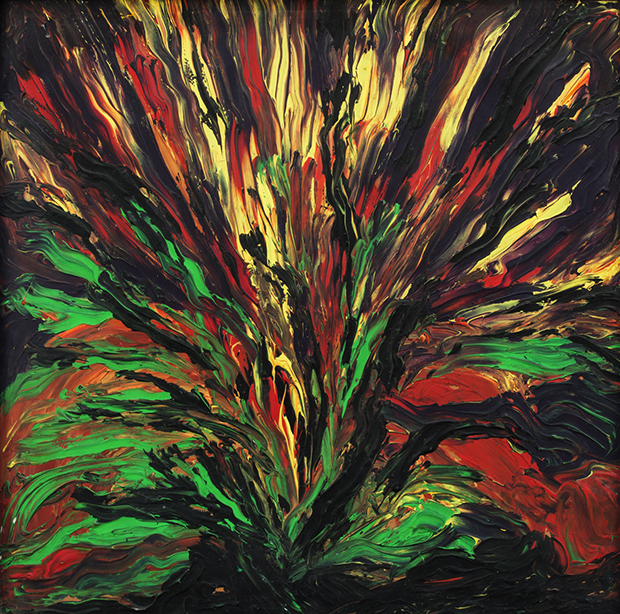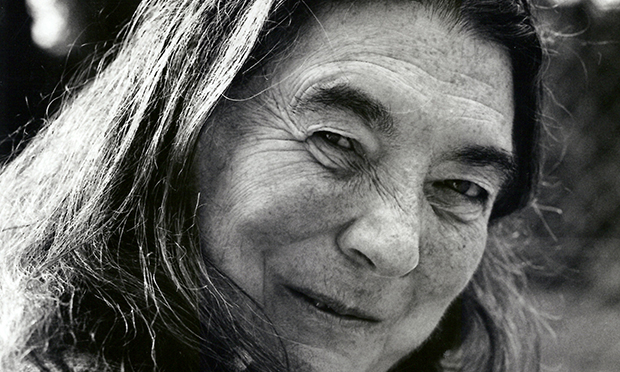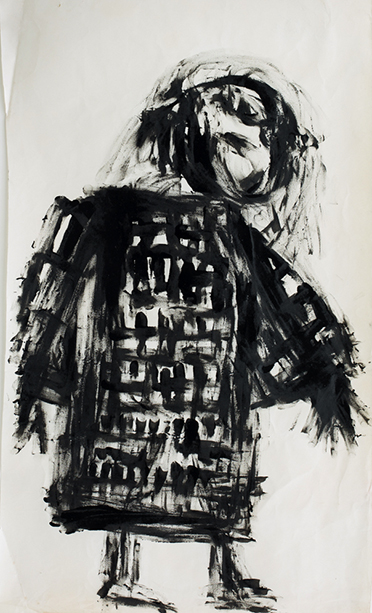Mary Barnes: Boo-Bah – art review
The Nunnery Gallery on Bow Road, hosting the first show of Mary Barnes’s artwork since the major 2010 retrospective at Space Studios, isn’t far from Kingsley Hall in Bromley-by-Bow, where Barnes spent 1965-1970 covering the walls with her paintings, using her own faeces and later grease crayons.
Kingsley Hall was briefly home to anti-psychiatrist R.D. Laing’s Philadelphia Association, which sought to provide spaces where people suffering from mental illness could live without being treated as insane. Barnes admitted herself in 1965.
Laing contended that madness, rather than being an illness, was a reasonable response to chaos and injustice in society, with ‘anti-psychiatry’ in its more extreme forms coming to glamorise insanity, the mentally ill seen as exceptionally perceptive. Art was encouraged, both as ‘treatment’ and as a way of communicating such perceptions.
“My first paintings were black breasts over the walls of the Hall,” wrote Barnes in 1969. “Joe gave me a tin of grease crayons. ‘Here, just scribble’. I did, on and on.” Joe – Joseph Berke, Barnes’s doctor at ‘the Hall’ – was also known to Barnes as ‘Boo-Bah’; the Nunnery show is named in his honour.
Barnes made and exhibited paintings until her death in 2001. Perhaps surprisingly, the Boo-Bah paintings are disciplined and composed. Small Figure, an early work, is made up of hurried, smudgy lines, but they are deployed deftly to reveal a little girl whose hunched awkwardness is expressive, moving and characterful, not clumsy.
The row of colourful Untitled’s on the opposite wall bear similarly visible artefacts of their creation but their connected flow and intricacy of pattern have all it takes to trap a viewer’s stare.
Barnes’s later works, done in oil pastels, have more solid blocks of colour and more figuration. They feature vividly drawn personages whose psychedelic colouring adds to their mystery, as though they were figures from an unknown religion.
The exhibition is informative about the institutional origins of Barnes’s career and raises questions about untutored art, and art used as therapy. Do you look at Barnes’s paintings as symptoms of her illness or as one would a standard art-show? In this respect, some of anti-psychiatry’s eliding of distinctions is refreshing and brings clarity.
‘Outsider art’ – graffiti, ghost bikes, Christmas lights – is often more interesting and informative about contemporary culture than gallery shows. To see a suggestive blending of the one with the other, get thee to the Nunnery.
A discussion of Barnes’s work, including Dr Joseph Berke on the panel, will be held at the Nunnery Gallery on 24 February.
Mary Barnes: Boo-Bah is at Nunnery Gallery, 181 Bow Road, E3 2SJ until 29 March
www.bowarts.org/nunnery

Volcanic Eruption by Mary Barnes. Image courtesy of Dr J. Berke. Photograph: Ollie Harrop



